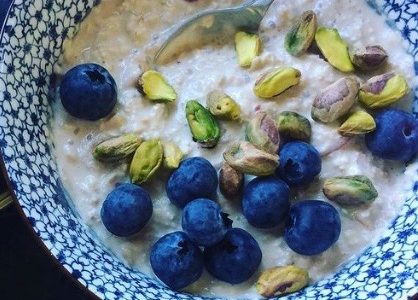Glycemic Index

Stabilise blood sugar with a GLYCEMIC strategy.
All food provides energy, but carbohydrate foods have the most direct effect on your blood glucose levels, and determine whether your resulting energy level will be short-lived, (leading to snacking), or nicely sustained over a long period.
The Glycemic Index ranks any food according to how quickly it digests and raises your blood sugar, compared to pure glucose. If one was to consume actual glucose – which requires no digestion – it would produce a quick spike in the blood stream.
Foods that digest slowly are rated ‘low glycemic’, and they sustain and maintain energy levels for longer. Foods that digest quickly spike blood glucose and are rated as ‘high glycemic’.
Why do we worry about high blood glucose?
Having high blood glucose levels regularly, for long periods of time, can result in permanent damage to small blood vessels and parts of the body such as the eyes, nerves and kidneys. Diabetes should not be underestimated, and can be avoided by understanding and adopting the glycemic index strategy.
Carbohydrates vary and are not all born equal. Refined or processed carbohydrates that break down into simple sugars quickly, after minimal digestion, have a high glycemic score (Cakes, confectionary, biscuits, white rice, white bread, pasta). In contrast, whole-grain starches – with their fibre still intact from less processing – require much more digestion before their sugars get released, meaning they mostly have a low glycemic score.
Anything that slows digestion, lowers the glycemic score of a meal or food.
Adding protein or fat to a carbohydrate food has the same effect as fibre, these both S L O W digestion, therefore lower the glycemic value of the carbohydrate. For example, simply adding grated cheese to the top of a baked potato will lower its glycemic rating. A thick spread of nut butter will lower the glycemic score of a slice of toast, whereas a spread of jam will raise the score of the toast.
Tips for lowering glycemic load and maintaining energy levels;
- Swap refined carbohydrates(white) for unrefined (brown); wild and whole-grain rice, quinoa, whole-wheat pasta, rye breads and Rough Oatcakes.
- Choose sweet potatoes instead of white potatoes, they have more fibre and digest more slowly.
- Include protein with every meal.
- Opt for berries as your choice of fruit, they are naturally lower in their glycemic score, so great to add to porridge with some nuts.
- Reduce the volume of pasta – switch the ratio of vegetables/protein to pasta, making the pasta part less than 50% of the dish.
- Slow digestion by having fibrous vegetables slightly undercooked. Avoid mashing potatoes, and anything over-cooked, refined or processed, that will digest quickly, raising blood sugar.
- Plan nutritious snacks to deter the impulse-purchase of high sugar confectionary; choose humous and carrot sticks, use nuts with a fresh fruit snack to blunt the fruit’s sugar, adding protein and healthy fats will slow digestion.
- A dash of lemon or vinegar added to a meal can lower its glycemic score, slowing digestion and stabilising blood sugar levels.
- Avoid fizzy, sweet drinks and only consume ‘sports drinks’ when a rapid delivery of glucose is necessary for recovering muscles to support a high intensity or endurance sport.
- Moderate alcohol intake and always avoid consuming on an empty stomach; it has a high glycemic rating, metabolising quickly to produce a peak of glucose.
- Don’t be afraid of eating healthy fats, like avocado, olive oil, butter in moderation and oily fish. Fats don’t make you fat, it’s chronically raised blood sugar – in excess of our needs – that gets converted to fat and stored.
